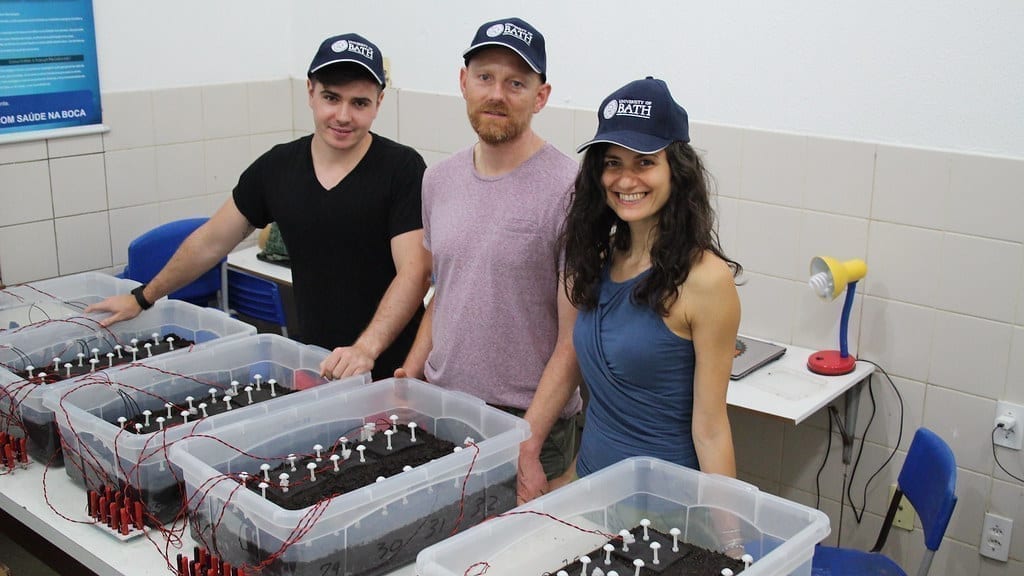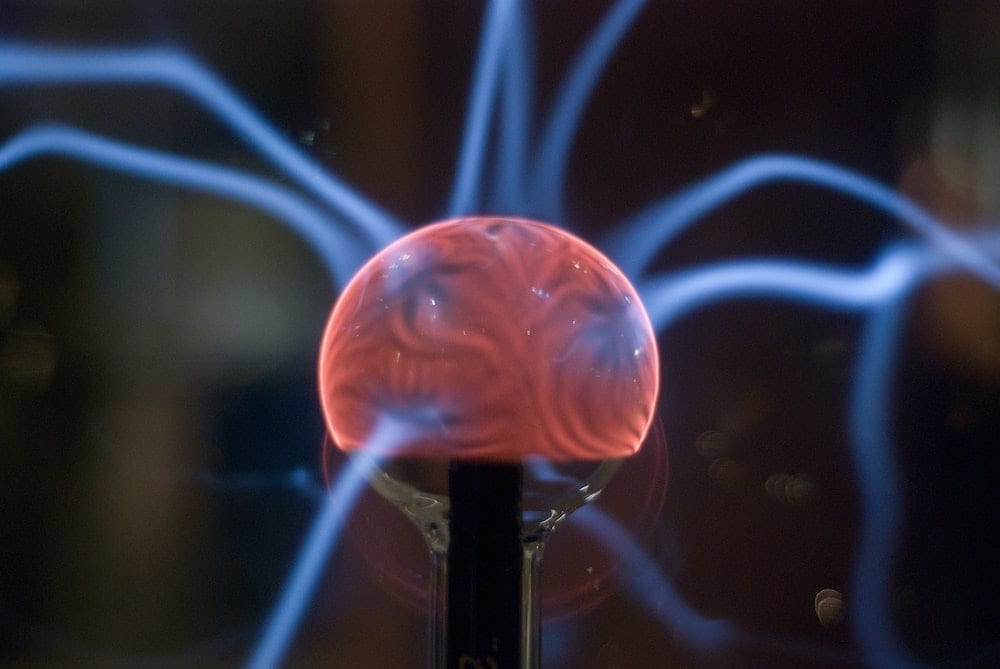
Researchers in Europe are working on elastic membrane patches that mimic how the skin looks and feels and can collect information related to the wearer.
Image credit – Aaron Lee/Unsplash
Picture this: You’ve experienced no physical sensation beyond your wrists for years, then a doctor drapes a thin, flexible membrane over your hand and, like magic, you can feel the trickle of water through your fingers again.
This may sound like an outlandish scenario, but it’s not. Researchers across Europe are making rapid progress towards developing elastic membrane patches that mimic the human skin either in looks, functionality, or both.
Electronic skin (e-skin) is categorised as an ‘electronic wearable’ – that is, a smart device worn on, or near, the surface of the skin to extract and analyse information relating to the wearer. A better-known electronic wearable is an activity tracker, which typically senses movement or vibrations to give feedback on a user’s performance. More advanced wearables collect data on a person’s heart rate and blood pressure.
Developers of e-skins, however, are setting their sights higher. Their aim is to produce stretchy, robust, flexible membranes that incorporate advanced sensors and have the ability to self-heal. The potential implications for medicine and robotics are immense.
Central nervous system
Already in circulation are skin-like membranes that adhere to the surface of the body and detect pressure, strain, slip, force and temperature. Others are being created to recognise biochemical changes that signal disease. A number of projects are working on skins that will envelop robots or human prosthetics, giving these machines and instruments the ability to manipulate objects and perceive their environments with a high degree of tactile sensitivity. And the dream, of course, is to develop an e-skin that can connect with the central nervous system of the wearer (someone who is paralysed, for instance), thereby restoring sensation that has been lost through disease or trauma.
With their project called PepZoSkin, researchers at Tel Aviv University in Israel are on a journey they believe will eventually turn this dream into a reality. Within a decade, they believe artificial skin patches will be sufficiently advanced to alert wearers to dangers they are not able to perceive naturally.
‘I have a friend in a wheelchair who has no sensation in his legs – he has no idea if hot coffee has spilled on his legs,’ said research associate Dr Sharon Gilead. ‘The idea is that a skin patch on his leg will give a signal – maybe a red light – that will tell him when something is wrong, saving him from a severe burn.
‘This will be a first step. And as we progress on this mission, we will get the thin layer (e-skin) to talk to the nervous system, replacing the sense of feeling that’s missing. Though this is still a little distant, it’s definitely the direction (we’re moving in).’
The Tel Aviv team is developing a skin that will extract and analyse health information without requiring an external source of power. The membrane will be self-powered thanks to a phenomenon known as piezoelectricity. This refers to an electric charge that accumulates in certain materials (including bone, DNA and certain proteins) in response to applied mechanical stress. In short, when you press on an e-skin made from piezoelectric material, even very gently, it will generate an electric charge. Add a circuit, and this electricity can be put to use – it could power a pacemaker, for instance.
For a person with paralysis, the hot spilled drink would create a deformation of the e-skin that would be read by the skin as a mechanical pressure, and this in turn would be translated into an electrical signal. This signal might then trigger that warning light or a sound.
The Latest Updates from Bing News & Google News
Go deeper with Bing News on:
Electronic wearable
- A Stretchy, Rubber-Like Energy Storage Device for Wearable Tech
Their research has been published in the esteemed electronic engineering journal, npj Flexible Electronics. The advent of wearable technology has brought with it a pressing need for energy storage ...
- New research demonstrates potential of thin-film electronics for flexible chip design
The mass production of conventional silicon chips relies on a successful business model with large "semiconductor fabrication plants" or "foundries." New research by KU Leuven and imec shows that this ...
- Unlocking a US$ 3.7 Billion Opportunity: The Rise of Stretchable Conductive Material in Wearables Electronics
The stretchable conductive material market is expected to experience substantial growth during the forecast period. The market size is projected to reach US$ 3.7 billion by 2033, with a significant ...
- Opening up the potential of thin-film electronics for flexible chip design
The mass production of conventional silicon chips relies on a successful business model with large 'semiconductor fabrication plants' or 'foundries'. New research by shows that this 'foundry' model ...
- Scientists stencil-paint carbon nanotube components for flexible transparent electronics
Researchers from Skoltech, MIPT, and elsewhere have found a fast and inexpensive way to create geometric patterns in carbon nanotube films. The resulting films turned out to have superior properties ...
Go deeper with Google Headlines on:
Electronic wearable
[google_news title=”” keyword=”electronic wearable” num_posts=”5″ blurb_length=”0″ show_thumb=”left”]
Go deeper with Bing News on:
Electronic skin
- Monstera Black and alysalysalys share a glorious electronic journey on "Awkward Attraction"
Monstera Black and alysalysalys ignite a fervent sonic revolution with their collaborative EP Awkward Attraction, available via Voitax Records. Seamlessly ...
- Toxic chemicals from microplastics can be absorbed by the skin, study finds
A new study used 3D human skin-equivalent models to examine how flame retardant additives in microplastics are absorbed by the skin. The findings show that several flame-retardant additives passed ...
- 2026 Kia EV9 GT Debuts January With ‘Enormous Power’ And 0-60 In 4 Seconds
The Kia EV9 GT performance flagship has been officially confirmed to debut in January 2025. Kia said that the new version of its largest SUV will have “enormous power output” from a dual electric ...
- Why Global Demand Is Soaring For Groundbreaking DJ-Producer Peggy Gou: ‘I Worked Hard To Have a Glamorous Life’
South Korea-born, Berlin-based electronic artist is building a booming business with her uncompromising vision.
- 8 Best Sunscreens under Rs. 100 to keep your Skin Safe and Healthy this Summer (2024)
Discover the best sunscreens under 100 rupees for effective sun protection without breaking the bank. These budget-friendly options offer a range of benefits, from broad-spectrum UV protection to ...
Go deeper with Google Headlines on:
Electronic skin
[google_news title=”” keyword=”electronic skin” num_posts=”5″ blurb_length=”0″ show_thumb=”left”]










